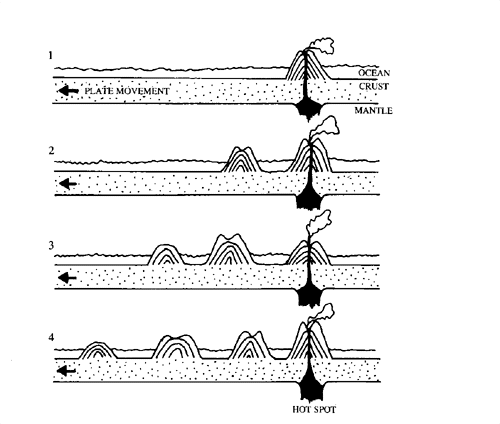To explain the origin of mid-oceanic island chains such as the Galapagos Islands, geologists devised the so-called
"hotspot" theory. This model is consistent with the broader concept of plate tectonics (what does
this mean?). The process is continuous but can be seen as four major steps as shown:
1. Hot spot lava rises through oceanic crust creating volcanic island.
2. As the oceanic plate moves over hotspot an new island is created and the old one is eroded by wave and weather action.
3. Step 2 is repeated and the first island is further eroded.
4. Steps 2 and 3 are repeated, and an island chain is created.
A similar island chain exists in the Hawaiian archipelago. Eventually the oldest islands are eroded away so that they
disappear beneath the waves. These underwater seamounts extend several hundred miles northeast of the Galapagos Islands. Other
evidence for the hotspot model is the relative ages of islands: youngest in the west, the oldest to the east. You can see this
clearly in a map of the tectonic situation in the Galapagos.
|


